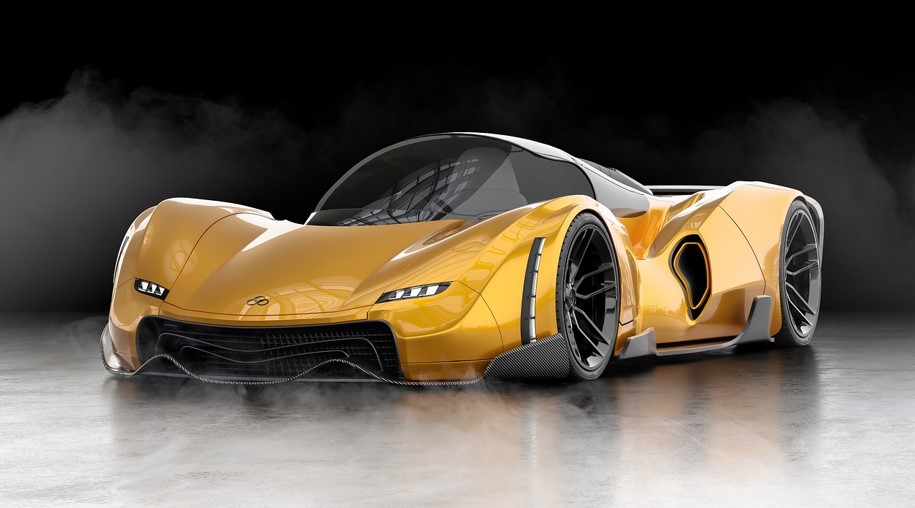In a groundbreaking move for the luxury automotive world, Ferrari has confirmed that its first all-electric vehicle (EV) will officially launch in 2026. This announcement marks a historic turning point for the Italian automaker renowned for its combustion-engine masterpieces and Formula 1 legacy. With the EV revolution in full swing and demand for high-performance electric vehicles growing, Ferrari is stepping into the future without compromising its core values: performance, craftsmanship, and exclusivity.
In this in-depth article, we explore what Ferrari’s first EV means for the brand, the supercar segment, and the future of electric mobility. Whether you’re a Ferrari enthusiast, a car investor, or someone passionate about electric vehicles, this is the moment you’ve been waiting for.
Why Ferrari’s First EV Is Such a Big Deal
For decades, Ferrari has built its legacy on powerful internal combustion engines V8s, V10s, and the legendary V12s that have roared down both racetracks and luxury avenues. Until now, Ferrari resisted the trend toward full electrification, choosing instead to perfect hybrid performance through models like the SF90 Stradale and 296 GTB.
However, with increasing pressure from global emission regulations, advances in battery technology, and changing customer expectations, Ferrari has made the strategic move to electrify its lineup starting with its first fully electric model in 2026.
This isn’t just a new chapter for Ferrari it’s the beginning of a high-stakes transformation in the ultra-luxury EV market, a space currently occupied by the Porsche Taycan, Tesla Model S Plaid, Lucid Air Sapphire, and soon-to-be-released Lamborghini Lanzador.
What We Know So Far About Ferrari’s Electric Supercar
Ferrari’s EV project has been kept mostly under wraps, but key insights have emerged:
- Launch Year: 2026, officially confirmed by CEO Benedetto Vigna.
- Production Facility: Ferrari is constructing a cutting-edge EV production plant in Maranello, Italy, which will include battery assembly and electric motor manufacturing.
- Performance Focus: The EV will maintain Ferrari’s legacy of speed, precision handling, and emotion-driven design.
- No Mass Production: Like all Ferraris, the EV will be limited-production to preserve exclusivity.
“The electric Ferrari will be a game-changer,” said Vigna in an interview with Bloomberg. “It will still be a Ferrari, with the same heart and soul our drivers expect—just with electric propulsion.”
Potential Specs (Unconfirmed, But Likely)
Although Ferrari hasn’t released specs, EV insiders expect the following based on market trends and competitive benchmarks:
| Feature | Expected Specification |
|---|---|
| Acceleration (0-100 km/h) | Under 2.5 seconds |
| Range | 300–400 miles per charge (480–640 km) |
| Battery Type | Solid-state or high-density lithium-ion |
| Charging Time | Ultra-fast (15–20 minutes to 80%) |
| Power Output | Over 1,000 horsepower |
| Drivetrain | AWD with torque vectoring |
| Price Range | $400,000 to $600,000 |
Ferrari is likely to customize electric sound generation through internal speakers, simulating the growl of a V12 to maintain the emotional driving experience.
A Masterclass in Luxury and Sustainability
Ferrari’s EV isn’t just about raw speed—it’s about bringing luxury and sustainability together. As governments around the world push for carbon neutrality, Ferrari is aiming to become carbon neutral by 2030. This electric vehicle plays a key role in achieving that mission.
Expect the EV to incorporate:
- Recyclable carbon fiber components
- Eco-leather and vegan interior options
- Energy-efficient infotainment systems
- Regenerative braking and AI-powered driving modes
Competing in the Ultra-Luxury EV Arena
The market for high-performance EVs is becoming fiercely competitive. Ferrari will need to go head-to-head with:
- Porsche Taycan Turbo GT
- Rimac Nevera
- Tesla Roadster (Gen 2)
- Lamborghini Lanzador
- Aston Martin Valhalla (Hybrid-EV transition)
Ferrari’s competitive edge? Brand loyalty, Italian design heritage, and an unmatched history in motorsports.
How Ferrari Plans to Keep Its Signature Emotion
A major concern for traditional Ferrari fans is the lack of engine sound in EVs. To address this, Ferrari is rumored to be developing a proprietary sound system that mimics the engine tones based on the EV’s acceleration, speed, and torque output. This will help preserve the visceral connection between car and driver.
Additionally, Ferrari will ensure the driving dynamics remain unique: steering feedback, weight distribution, and suspension systems will be fine-tuned for high-performance handling.
What It Means for Investors and Car Enthusiasts
Ferrari’s entry into the EV segment isn’t just about innovation—it’s about long-term brand evolution. Investors are closely watching Ferrari’s EV play as a sign of its ability to future-proof in a zero-emission world.
Ferrari Car collectors, meanwhile, may see the first Ferrari EV as a rare collectible a pivotal moment in automotive history that combines old-world prestige with new-age innovation.












